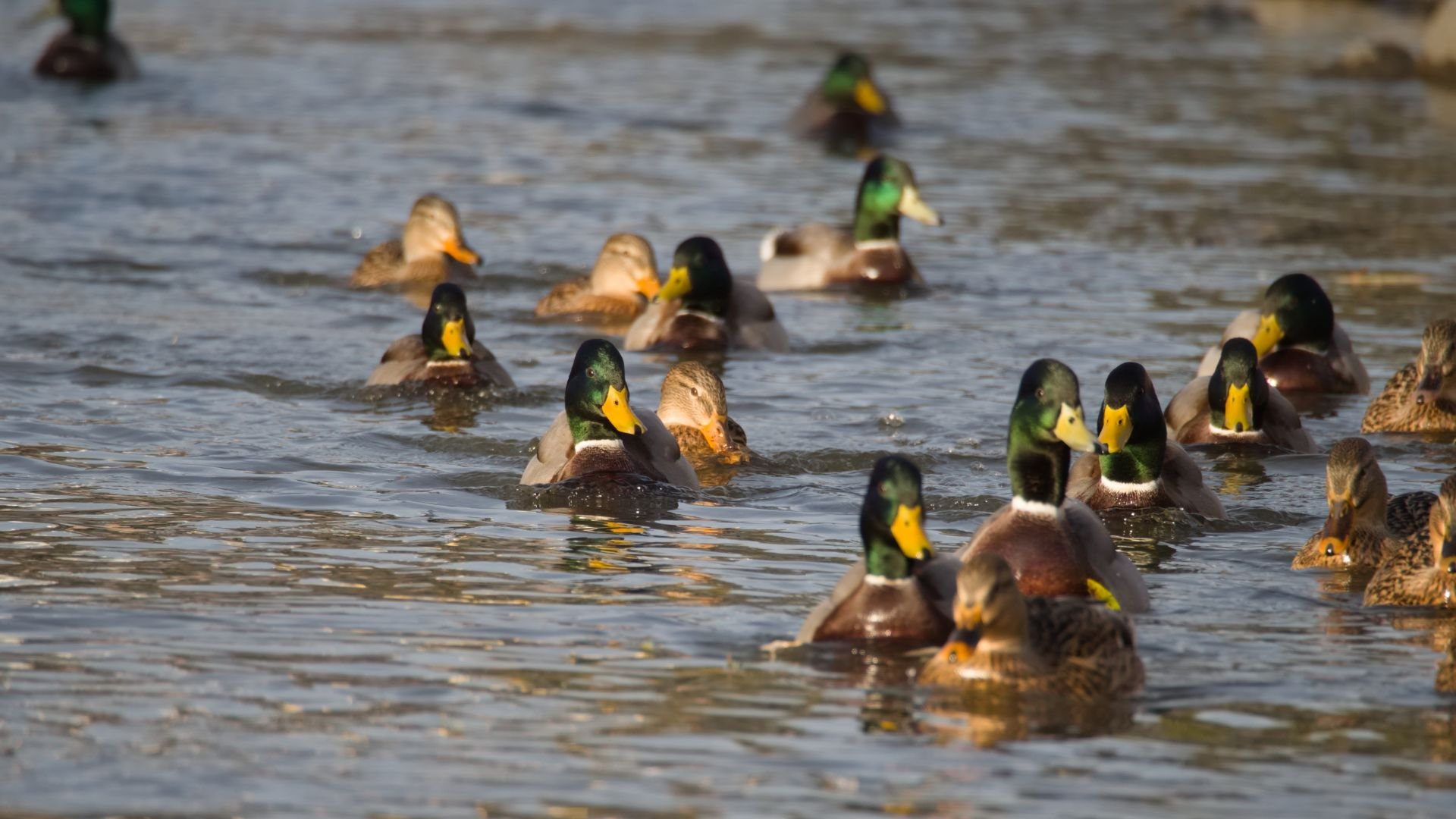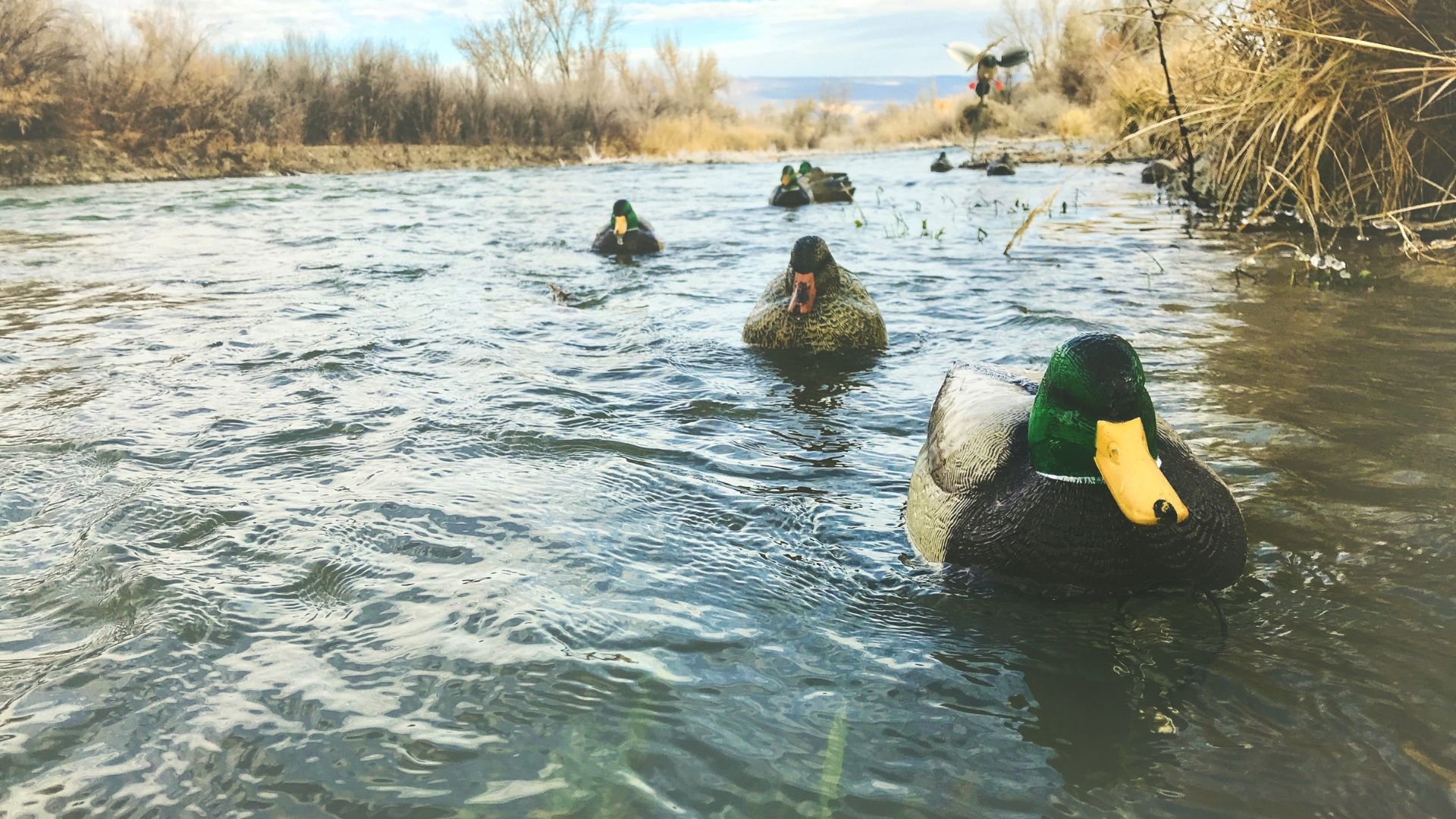Mastering the River Dance: The Best Tips and Duck Decoy Spreads for Rivers
As avid waterfowl hunters, we understand the allure of the river dance—the graceful and hypnotic movements of ducks gliding along the currents. However, river duck hunting presents unique challenges that require a mastery of decoy spreads and strategies to lure in these elusive birds successfully.
In this post, we delve into the world of river duck hunting and explore the art of decoy spreads. Whether you're a seasoned hunter or a passionate beginner, these insights will enhance your waterfowl hunting experience and set you on a path to becoming a river-hunting virtuoso.
Spreads for Small Rivers
Small rivers have their unique charm, often providing excellent cover and abundant feeding grounds for ducks. To maximize your success in such intimate settings, consider these small spreads and strategies for river duck hunting:
1. The River Sandbar Funneler
In cold weather, ducks flock to free-flowing rivers seeking open water. Follow their movements by scouting sandbars where they rest in groups. Set up a blocking pattern of up to 18 mallard decoys, rigged Texas-style, just upriver from your concealed position against the river bank. Blend in with ghillie suits, layout blinds, and natural cover for an effective and inconspicuous setup.
2. The Flooded Pasture Lane
When winter rains flood pastures and grainfields, draw ducks in by leaving scattered piles of tall grass or brush for them to get used to. Set up layout blinds, completely camouflaged with grass to match the surrounding cover. Place a mixed spread of 18 decoys in a lane spread, utilizing wind-powered wing spinners and jerk strings for realistic movement.
3. The Green Timber Horseshoe
Hunt in flooded timber by locating openings holding a good concentration of ducks. Use a minimalist approach with only two dozen mallard decoys. Create a horseshoe pattern around the edges of the timber trees, setting pairs of decoys to mimic paired drakes and hens. Add movement with a jerk string and adjust the spread as needed to attract ducks to the center of the hole
Decoys for Moving Waters
River currents add an extra layer of complexity to your decoy spread. To imitate natural movement and attract ducks effectively, consider these techniques:
1. Mimicking Natural Flow
Anchor your decoys in a line following the river's current. Adjust the length and spacing of the decoys to imitate a group of ducks leisurely floating downstream. This setup creates an enticing illusion of ducks enjoying the river's current, encouraging other ducks to join in.
2. Decoy Orientation
Pay attention to the orientation of your decoys concerning the water flow. Ducks typically face upstream when at rest, so ensure that some of your decoys imitate this natural behavior. As ducks approach your spread, they'll spot the decoys facing upstream, increasing their confidence in the setup.
3. Swimmer Decoys
Incorporate swimmer decoys into your spread to replicate ducks actively swimming against the current. Swimmer decoys add movement and a touch of realism, attracting ducks' attention from afar and encouraging them to investigate further.
Spreads for Large Rivers
Large rivers present a different set of challenges and opportunities for waterfowl hunters. To master these vast waterways, consider these spreads and strategies for waterfowling and duck hunting in big rivers:
1. The Open Water Big Rig
To pull ducks over long distances of open water, create a large and highly visible raft of resting waterfowl. Use 200-400 decoys, a mix of super magnum or magnum decoys, and black plastic jugs for added visibility. Set up the spread in a circular pattern with a floating blind in the middle, allowing it to pivot with shifting winds. Space the decoys approximately five feet apart and leave landing zones within the spread. Use sharp, continuous quacks to guide ducks toward the blind.
2. The Multi-Rig River Duck Decoy Spread
When ducks and geese raft up on big rivers, use a multi-rig spread for deep and current-filled water. Attach eight to 12 decoys to a long "mother line" anchored on both ends. Each decoy is rigged with a 1-foot line and metal ring, attached to snaps along the mother line at 6-foot intervals. Deploy the spread parallel to each other and staggered, utilizing super magnum decoys for high visibility. Set out the spread near island points or eddy pockets, and hide the boat in the best cover or create a temporary blind on the bank.
3. Big-River Combination Spread
For an ultra-realistic spread, use large numbers of goose decoys on big rivers to attract ducks and geese. Set up "pods" of duck and goose decoys on land and in the water in various postures. In front of the blind, place a combination of duck decoys in resting and feeding positions. Create landing zones with gaps between groups of decoys. Spread as many decoys as possible along the riverbank upwind of the blind for a successful setup.
These decoy spread strategies are designed for big rivers and can significantly enhance even a beginner’s waterfowl hunting success on open water and in diverse river environments.
Strategies for Decoy-Shy Ducks
Decoy-shy ducks can pose a challenge for even the most seasoned hunters. To overcome this behavior and improve your success rates, try these tactics:
1. Simplified Spreads
In highly pressured areas, opt for smaller, more modest decoy spreads. Decoy-shy ducks may be intimidated by large groups, but a few well-placed and realistic decoys can appear more inviting.
2. Realistic Decoy Placement
Pay attention to the spacing between decoys, ensuring they look natural and unforced. Ducks are perceptive and can quickly spot unnatural patterns, leading them to become wary and avoid your spread.
3. Concealment
Place yourself and your hunting blind or boat in natural cover, such as reeds or overhanging branches, to remain concealed from wary ducks. Creating a seamless blend with your surroundings will make ducks feel more at ease, increasing the likelihood of a successful hunt.
3 Spreads Duck Hunters Don't Use Often Enough
For unique and effective spread ideas for targeting ducks on large rivers, try out these unconventional strategies:
1. The Interspersed Goose Decoy Spread
A lesser-known but highly effective spread for attracting ducks involves incorporating goose decoys into the mix. Rather than placing goose decoys on the side, center your spread around them. Geese tend to shy away from duck decoys, so placing the duck decoys off to the side of the goose decoys can lead ducks to land with the geese.
2. The Hidden Waterfowl Oasis
When ducks face high hunting pressure, they seek out hidden pockets of habitat where they can find refuge. To capitalize on this behavior, focus on creating a concealed spread that reassures ducks it's a safe spot. Scatter decoys along the edge of vegetation, with ample space between them, and doesn't prioritize visibility. Instead, let the safety of the location speak for itself. Ducks will swim into cover as they feel comfortable, and you'll experience incredible decoying moments with little chance of the birds flaring upon your approach.
3. The Spinner Extravaganza in the Fields
For field hunting, spinning-wing decoys are a go-to choice but don't limit yourself to just a few. When "running traffic" on ducks and hunting between the roost and feed fields, go big with your spinner setup. Create the illusion of a new feed field by deploying a large number of spinning-wing decoys to generate excitement and visibility. Consider using remotes to sync and control the spinners, ensuring they turn off once the ducks are committed. This approach can lead to an impressive number of ducks bombarding your decoy spread in search of a tempting feeding spot.
Tips and Tricks for River Duck Hunting
Beyond decoy spreads, several essential tips and tricks can elevate your river duck hunting game:
Decoy Positioning Based on Current and Wind Direction
To make your decoy spread appear more natural, position them according to the prevailing current and wind direction. Ducks typically land facing into the wind, and aligning your spread accordingly will make it more inviting and convincing.
Effective Use of Motion Decoys and Jerk Cords
Motion decoys and jerk cords can add a realistic touch to your spread by simulating natural movement. Use them strategically to create ripples and mimic the behavior of live ducks, effectively attracting passing flocks.
Blending Decoys With Natural Surroundings
Camouflage your decoys to match the natural surroundings, making them less conspicuous to wary ducks. Use vegetation and mud to conceal your decoy's bright colors and shine, ensuring a seamless blend with the river environment.
Importance of Scouting and Adapting to Changing Conditions
Scouting is crucial for a successful river duck hunt. Familiarize yourself with the area's duck patterns, feeding grounds, and roosting locations. Be prepared to adapt your spread and hunting approach based on the ducks' behavior and changing weather conditions.
HIT-AND-RUN Setups
Ducks and geese may relocate frequently, especially during the late season. Therefore, we recommend that you set up around three to five different open-water areas and spend two to three hours at each location.
Premier Guided Duck Hunts with Split Reed
Mastering the art of decoy spreads is an essential skill that can make all the difference between a successful hunt and a missed opportunity. By understanding the unique dynamics of small and large river systems and implementing effective decoy strategies, you can elevate your waterfowl hunting experience to new heights.
Remember, river duck hunting requires patience, observation, and a willingness to adapt to ever-changing conditions. By blending in with nature, mimicking natural movements, and staying ahead of decoy-shy ducks, you can improve your chances of a bountiful harvest.
At Split Reed, we live and breathe waterfowl hunting. Our expert guides are well-versed in river duck hunting and have a deep understanding of the intricacies involved. When you book a guided waterfowl hunt with Split Reed, you gain access to a wealth of knowledge, experience, and passion for the sport. We guarantee an unforgettable and rewarding hunting experience, whether you're a seasoned hunter or a newcomer to the world of river duck hunting.
Are you ready to embark on an extraordinary waterfowl hunting adventure? Visit our website and book your guided duck hunt with Split Reed today!


